CCL25/CCR9 interaction promotes the malignant behavior of salivary adenoid cystic carcinoma via the PI3K/AKT signaling pathway
- PMID: 36003306
- PMCID: PMC9394511
- DOI: 10.7717/peerj.13844
CCL25/CCR9 interaction promotes the malignant behavior of salivary adenoid cystic carcinoma via the PI3K/AKT signaling pathway
Abstract
Background: CC chemokine receptor 9 (CCR9), an organ-specific chemokine receptor, interacts with its exclusive ligand CCL25 to promote tumor proliferation and metastasis. However, the effect of CCR9 on salivary adenoid cystic carcinoma (SACC) malignant behavior remains unknown. This study aimed to investigate the specific molecular mechanism by which CCR9/CCL25 modulates malignant progression in SACC.
Methods: Immunohistochemistry staining and RT-qPCR analyses were performed to detect the correlation of CCR9 expression and tumor progression-associated markers in SACC. In vitro, SACC cell proliferation and apoptosis were evaluated using Cell Counting Kit-8 and colon formation, and cell migration and invasion were detected by wound healing and transwell assays. Vercirnon was used as an inhibitor of CCR9, and LY294002 was used as an inhibitor of the PI3K/AKT pathway in this study. Western blot and RT-qPCR assays were carried out to measure the downstream factors of the interaction of CCL25 and CCR9. The effect of CCL25 on the development of SACC in vivo was examined by a xenograft tumor model in nude mice following CCL25, Vercirnon and LY294002 treatment.
Results: CCR9 was highly expressed in SACC compared with adjacent salivary gland tissues, and its level was associated with tumor proliferation and metastases. CCL25 enhanced cell proliferation, migration, and invasion through its interaction with CCR9 and exerted an antiapoptotic effect on SACC cells. Targeting CCR9 via Vercirnon significantly reduced the phosphorylation level of AKT induced by CCL25. CCL25/CCR9 could activate its downstream factors through the PI3K/AKT signaling pathway, such as cyclin D1, BCL2 and SLUG, thus promoting SACC cell proliferation, antiapoptosis, invasion and metastasis. The in vivo data from the xenograft mouse models further proved that CCL25 administration promoted malignant tumor progression by activating the PI3K/AKT pathway.
Conclusion: The interaction of CCL25 and CCR9 promotes tumor growth and metastasis in SACC by activating the PI3K/AKT signaling pathway, offering a promising strategy for SACC treatment.
Keywords: CCL25; CCR9; Metastasis; PI3K/Akt; Proliferation; Salivary adenoid cystic carcinoma.
© 2022 Chai et al.
Conflict of interest statement
The authors declare that they have no competing interests.
Figures
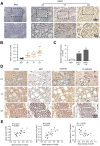
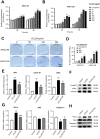
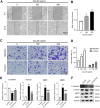

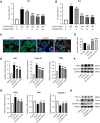

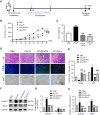


Similar articles
-
EGF/EGFR Promotes Salivary Adenoid Cystic Carcinoma Cell Malignant Neural Invasion via Activation of PI3K/AKT and MEK/ERK Signaling.Curr Cancer Drug Targets. 2022;22(7):603-616. doi: 10.2174/1568009622666220411112312. Curr Cancer Drug Targets. 2022. PMID: 35410600
-
CCR9-CCL25 interaction suppresses apoptosis of lung cancer cells by activating the PI3K/Akt pathway.Med Oncol. 2015 Mar;32(3):66. doi: 10.1007/s12032-015-0531-0. Epub 2015 Feb 18. Med Oncol. 2015. PMID: 25691296
-
MiR-200b-5p inhibits tumor progression in salivary adenoid cystic carcinoma via targeting BTBD1.Cell Signal. 2023 Sep;109:110748. doi: 10.1016/j.cellsig.2023.110748. Epub 2023 Jun 7. Cell Signal. 2023. PMID: 37290676
-
CCR9 and CCL25: A review of their roles in tumor promotion.J Cell Physiol. 2020 Dec;235(12):9121-9132. doi: 10.1002/jcp.29782. Epub 2020 May 13. J Cell Physiol. 2020. PMID: 32401349 Review.
-
The Roles of CCR9/CCL25 in Inflammation and Inflammation-Associated Diseases.Front Cell Dev Biol. 2021 Aug 19;9:686548. doi: 10.3389/fcell.2021.686548. eCollection 2021. Front Cell Dev Biol. 2021. PMID: 34490243 Free PMC article. Review.
Cited by
-
THBS1-Mediated Degradation of Collagen via the PI3K/AKT Pathway Facilitates the Metastasis and Poor Prognosis of OSCC.Int J Mol Sci. 2023 Aug 28;24(17):13312. doi: 10.3390/ijms241713312. Int J Mol Sci. 2023. PMID: 37686118 Free PMC article.
-
EN1 promotes lung metastasis of salivary adenoid cystic carcinoma by regulating the PI3K-AKT pathway and epithelial-mesenchymal transition.Cancer Cell Int. 2024 Jan 30;24(1):51. doi: 10.1186/s12935-024-03230-7. Cancer Cell Int. 2024. PMID: 38291456 Free PMC article.
-
Tumor-associated macrophage-derived exosomal miR21-5p promotes tumor angiogenesis by regulating YAP1/HIF-1α axis in head and neck squamous cell carcinoma.Cell Mol Life Sci. 2024 Apr 11;81(1):179. doi: 10.1007/s00018-024-05210-6. Cell Mol Life Sci. 2024. PMID: 38602536 Free PMC article.
-
Targeting the PI3K/AKT/mTOR pathway in lung cancer: mechanisms and therapeutic targeting.Front Pharmacol. 2025 Feb 18;16:1516583. doi: 10.3389/fphar.2025.1516583. eCollection 2025. Front Pharmacol. 2025. PMID: 40041495 Free PMC article. Review.
References
-
- Bai JW, Chen MN, Wei XL, Li YC, Lin HY, Chen M, Li JW, Du CW, Man K, Zhang GJ. The zinc-finger transcriptional factor Slug transcriptionally downregulates ERα by recruiting lysine-specific demethylase 1 in human breast cancer. Oncogenesis. 2017;6(5):e330. doi: 10.1038/oncsis.2017.38. - DOI - PMC - PubMed
-
- Chau NG, Hotte SJ, Chen EX, Chin SF, Turner S, Wang L, Siu LL. A phase II study of sunitinib in recurrent and/or metastatic adenoid cystic carcinoma (ACC) of the salivary glands: current progress and challenges in evaluating molecularly targeted agents in ACC. Annals of Oncology. 2012;23(6):1562–1570. doi: 10.1093/annonc/mdr522. - DOI - PubMed
Publication types
MeSH terms
Substances
LinkOut - more resources
Full Text Sources
Research Materials

